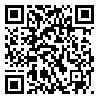Volume 12, Issue 1 (2024)
Health Educ Health Promot 2024, 12(1): 1-8 |
Back to browse issues page
Download citation:
BibTeX | RIS | EndNote | Medlars | ProCite | Reference Manager | RefWorks
Send citation to:



BibTeX | RIS | EndNote | Medlars | ProCite | Reference Manager | RefWorks
Send citation to:
Parsaei-Mohammadi P, Sabaghinejad Z, Ghaed-Amini Harouni S. New HeLIA; Validity and Reliability of the HeLIA Test in Thalassemia Major Patients in Iran. Health Educ Health Promot 2024; 12 (1) :1-8
URL: http://hehp.modares.ac.ir/article-5-72021-en.html
URL: http://hehp.modares.ac.ir/article-5-72021-en.html
1- Thalassemia & Hemoglobinopathy Research Center, Health Research Institute, Ahvaz Jundishapur University of Medical Sciences, Ahvaz, Iran
2- Department of Medical Library and Information Science, School of Allied Medical Sciences, Ahvaz Jundishapur University of Medical Sciences, Ahvaz, Iran
2- Department of Medical Library and Information Science, School of Allied Medical Sciences, Ahvaz Jundishapur University of Medical Sciences, Ahvaz, Iran
Abstract: (496 Views)
Aims: Numerous and diverse tools have been designed and validated for measuring health literacy. The aim of this study was the validation and adaptation of the HeLIA instrument for measuring health literacy in thalassemia major patients in Iran.
Instrument & Methods: This is a cross-sectional study, and data collection was done from October to December 2022. The research population included patients with thalassemia major hospitalized at Shahid Baghaei 2 Hospital in Ahvaz. The statistical population was 300 people, and the sample size was 170. The pre-validation population included 50 patients and ten experts for validation. Reliability was calculated using Cronbach’s alpha (for internal consistency). The Kuder-Richardson's (KR) test checked the consistency between the questions. Using Kaiser-Meyer-Olkin (KMO) was the measure of sampling adequacy. The Pearson correlation coefficient was used in this study. Also, SPSS 24 and Amos 24 were used.
Findings: The HeLIA is valid based on face validity, content validity, and construct validity. Cronbach’s alpha was 0.891 and showed the validity of the tool. Explanatory factor analysis showed a model with four factors named “understanding,” “reading, access and evaluation,” “care measures,” and “decision and using,” which can explain 53.149% of health literacy variances. Also, IFI=0.823, CFI=0.816, NFI=0.713, and RMSEA=0.08 show the model's fitness, and, the KR21=0.89, indicated the reliability of the tool. Pearson’s correlation coefficient showed significant correlations between all factors.
Conclusion: The findings of this study confirm the validity and reliability of the HeLIA in thalassemia major patients in Iran.
Instrument & Methods: This is a cross-sectional study, and data collection was done from October to December 2022. The research population included patients with thalassemia major hospitalized at Shahid Baghaei 2 Hospital in Ahvaz. The statistical population was 300 people, and the sample size was 170. The pre-validation population included 50 patients and ten experts for validation. Reliability was calculated using Cronbach’s alpha (for internal consistency). The Kuder-Richardson's (KR) test checked the consistency between the questions. Using Kaiser-Meyer-Olkin (KMO) was the measure of sampling adequacy. The Pearson correlation coefficient was used in this study. Also, SPSS 24 and Amos 24 were used.
Findings: The HeLIA is valid based on face validity, content validity, and construct validity. Cronbach’s alpha was 0.891 and showed the validity of the tool. Explanatory factor analysis showed a model with four factors named “understanding,” “reading, access and evaluation,” “care measures,” and “decision and using,” which can explain 53.149% of health literacy variances. Also, IFI=0.823, CFI=0.816, NFI=0.713, and RMSEA=0.08 show the model's fitness, and, the KR21=0.89, indicated the reliability of the tool. Pearson’s correlation coefficient showed significant correlations between all factors.
Conclusion: The findings of this study confirm the validity and reliability of the HeLIA in thalassemia major patients in Iran.
Article Type: Descriptive & Survey |
Subject:
Health Literacy
Received: 2023/10/17 | Accepted: 2023/11/18 | Published: 2023/12/25
Received: 2023/10/17 | Accepted: 2023/11/18 | Published: 2023/12/25
| Rights and permissions | |
 |
This work is licensed under a Creative Commons Attribution-NonCommercial 4.0 International License. |






